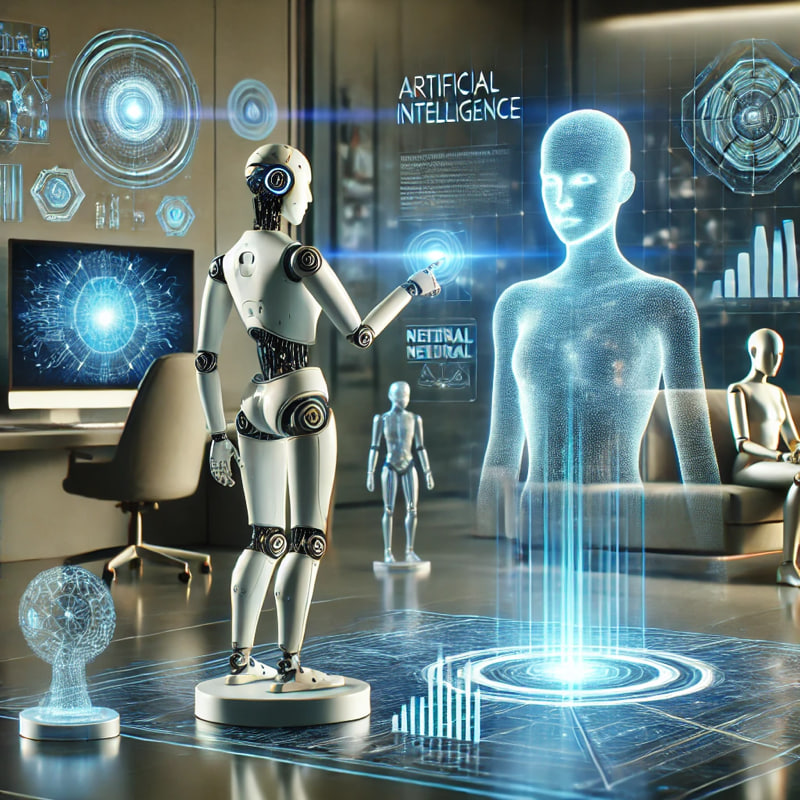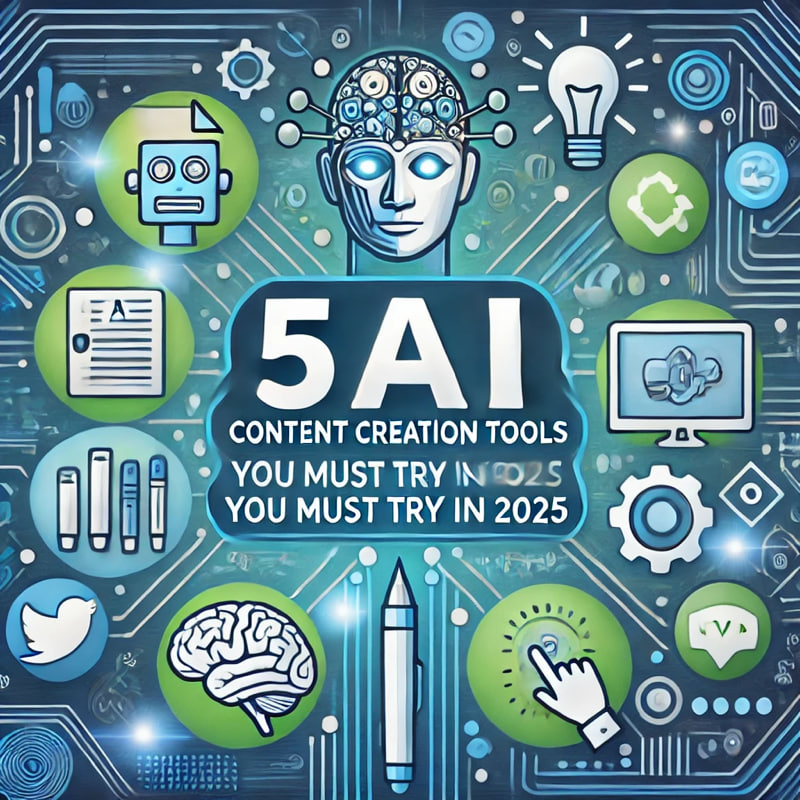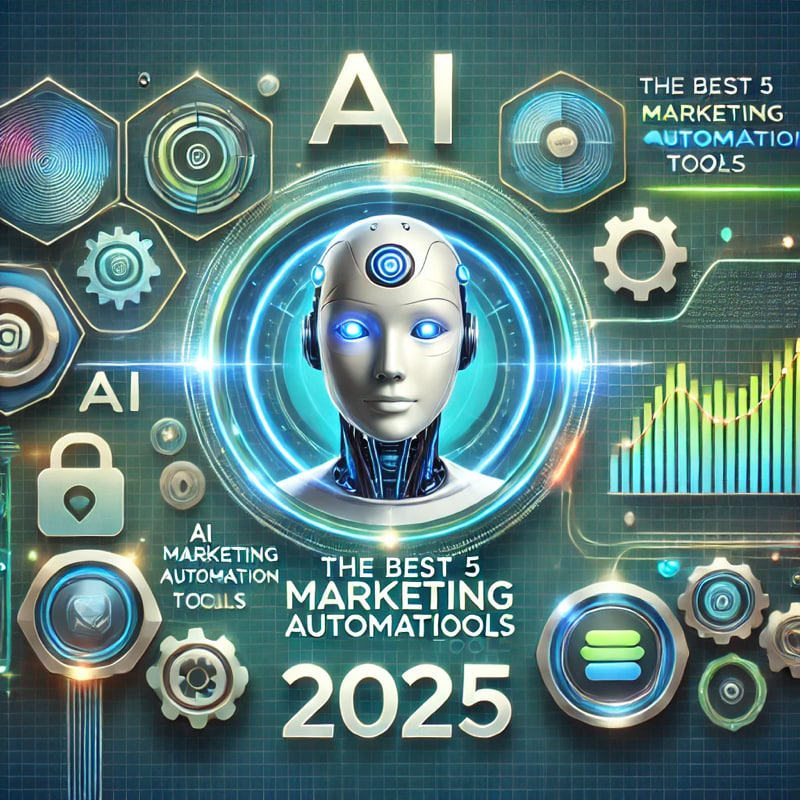Artificial intelligence is changing how we work and live. Knowing how to use it can really boost our productivity. With AI tools becoming more common, it’s key to keep up. This article will show you the best ways to use AI and get the most from AI tools.

A futuristic cityscape illuminated by neon lights, with abstract representations of neural networks and circuit patterns weaving through the buildings, symbolizing the synergy between technology and artificial intelligence, against a starry night sky.
Whether you’re new to AI or already know it well, this article has something for you. You’ll learn how to use AI and AI tools to make your daily tasks easier. By the end, you’ll know how to use AI to improve your productivity.
Introduction to AI Productivity
Artificial intelligence can change how we work. Using the right AI tools can greatly improve our productivity. In the next parts, we’ll explore the newest AI tools and methods. This will help you stay updated and use AI to its fullest potential.
Key Takeaways
- Understanding artificial intelligence and its potential to boost productivity
- Using AI tools to enhance daily productivity and workflow
- Staying ahead of the curve with the latest AI tools and techniques
- Getting the most out of artificial intelligence and AI tools
- Enhancing productivity with the right AI tools and techniques
- Using artificial intelligence to take productivity to the next level
Understanding the AI Revolution: A Beginner’s Guide
The AI revolution is changing how we live and work. It’s important to know the basics of AI to understand its power. Machine learning is a big part of AI, letting systems get better with time. It helps with automation and boosts productivity.
Exploring ai techniques is key. Tools like natural language processing and predictive analytics are used in many fields. They help in healthcare, finance, and education, leading to new ideas and growth.
It’s important to know what AI can and can’t do. AI can do tasks and give insights, but it can’t replace human decisions. By using machine learning and automation, we can make systems better and more helpful.
Key Concepts to Get Started
- Supervised and unsupervised learning
- Deep learning and neural networks
- Natural language processing and computer vision
Learning these concepts and ai techniques opens up AI’s full potential. As we dive deeper into AI, keeping up with new machine learning and automation advancements is crucial.
Essential AI Tips and Hacks for Daily Productivity
To boost daily productivity, using ai solutions is key. They make tasks easier and automate workflows. This lets people focus on important tasks and get more done faster. For example, ai tools can suggest topics, outline articles, and even write content.
Some important ai tips and hacks for daily productivity include:
- Using ai-powered project management tools to stay organized and on track
- Applying ai-driven time management techniques to prioritize tasks and avoid distractions
- Using ai solutions for content creation, like automated writing assistants and content generators
By adding these ai tips and hacks to daily routines, people can see big improvements in productivity and efficiency. As ai technology grows, we’ll see even more ways it can help with daily tasks and content creation.https://www.youtube.com/embed/Yciz-VVkOrE
The secret to getting the most out of ai for daily productivity is finding the right mix of tech and human touch. This way, people can fully use ai’s power and succeed in their work and personal lives.
Mastering Prompt Engineering for Better Results
Prompt engineering is key in ai techniques. It affects how well the output turns out. To get better results, you need to make effective prompts. These prompts should guide the ai model to what you want.
Understanding how the ai model solves problems is important. Using ai tricks can also help make the prompt better.
Crafting Effective Prompts
Here are some tips for making good prompts:
- Be specific and clear about what you want the ai model to achieve
- Use relevant keywords and phrases to help the ai model understand the context
- Keep the prompt concise and focused to avoid confusing the ai model
Advanced Prompt Techniques
Advanced techniques use ai tricks to improve prompts. One method is prompt chaining. This involves using several prompts in a row to get a specific result.
Leveraging AI for Content Creation and Analysis
Artificial intelligence is changing how we make and study content. AI tools help with tasks like writing, design, and video making. This makes the work faster and better. For example, AI can write blog posts, social media updates, and even books.
Using AI for content helps a lot because it can analyze lots of data. This gives creators useful info to make their content better. AI also automates simple tasks, like posting on social media. This saves time for more creative work.
AI has many uses in content creation and analysis. Here are a few ways it helps:
- Content generation: AI can make top-notch content, like blog posts and social media updates.
- Content optimization: AI helps make content better for search engines. This makes it easier for people to find.
- Content analysis: AI looks at lots of data to give insights. This helps creators improve their plans.
Overall, AI makes content creation and analysis better. It automates simple tasks and offers insights. This helps businesses make great content that speaks to their audience.
| AI Tool | Content Creation Task | Benefits |
|---|---|---|
| Language Generator | Writing blog posts and social media posts | High-quality content, increased efficiency |
| Design Assistant | Creating visual content, such as images and videos | Professional-looking content, reduced design time |
| Analytics Platform | Analyzing content performance and providing insights | Data-driven decision making, improved content strategy |
Automating Repetitive Tasks with AI Solutions
Automation is a big plus of ai tools. It helps users make their workflows smoother and more productive. By using machine learning, people and businesses can tackle repetitive tasks. This frees up time for more creative and strategic work.
Workflow Automation Strategies
To start automating, find out where ai tools can make a big difference. Look at tasks like data entry, bookkeeping, and customer service. Using workflow automation strategies can lower the chance of mistakes and boost efficiency.
Best AI Tools for Automation
Top ai tools for automation include Zapier, IFTTT, and Automate.io. These tools help users link different apps and services. This way, they can make custom workflows that handle repetitive tasks. For instance, users can automate tasks like:
- Scheduling social media posts
- Sending email notifications
- Updating spreadsheets
Integration Tips for Existing Systems
When adding ai tools to existing systems, think about how well they’ll work together. Look for tools that easily fit into your current workflow. This makes the switch to automated processes smoother. By using these tips and the power of machine learning and automation, users can achieve higher productivity and efficiency.
| AI Tool | Features | Pricing |
|---|---|---|
| Zapier | Workflow automation, integration with 1000+ apps | Free – $599/month |
| IFTTT | Customized workflows, integration with 600+ apps | Free |
| Automate.io | Workflow automation, integration with 200+ apps | Free – $249/month |
Advanced AI Techniques for Problem Solving
Advanced AI techniques are solving complex problems in many industries. These include machine learning, deep learning, and natural language processing. Businesses use these techniques to create new AI solutions. This improves their operations and customer service.
Examples of AI solutions are chatbots, virtual assistants, and predictive analytics tools. These tools automate tasks, offer personalized support, and make informed decisions. Understanding problem-solving strategies and AI techniques is key to developing these solutions.
Here are some key considerations for developing AI solutions:
- Define the problem statement clearly
- Choose the right AI technique for the problem
- Develop a robust training dataset
- Test and refine the AI model
By following these steps and using advanced AI techniques, businesses can innovate.

A futuristic workspace filled with glowing holographic displays showcasing various advanced AI algorithms and techniques, a seamless blend of technology and creativity, vibrant colors, abstract representations of problem-solving processes, innovative gadgets in use, an ambient lighting atmosphere that enhances the sense of discovery and intelligence.
As businesses adopt AI solutions, we’ll see big improvements in problem-solving. Keeping up with the latest AI techniques and trends helps organizations achieve their goals.
Combining Multiple AI Tools for Maximum Impact
To get the most out of AI tools, it’s smart to use more than one. This way, you can make your work flow better, do tasks faster, and work together more smoothly. By picking the right AI tools, you can build a set that fits your needs perfectly.
When picking AI tools to use together, think about a few things:
- Automation capabilities: Look for tools that can handle repetitive tasks.
- Productivity features: Choose tools that help you work better, like managing projects and tracking time.
- Integration options: Make sure the tools work well together and with what you already use.
Some top AI tools for making work easier include workflow management software and project management platforms. Using these together can make your work more efficient and productive.
The secret to using many AI tools well is to know what each one does best. Then, pick the ones that fit your needs best. This way, you can use AI tools to their fullest potential and do better at work.
| AI Tool | Automation Capability | Productivity Feature |
|---|---|---|
| Workflow Management Software | High | Project Management |
| Project Management Platform | Medium | Time Tracking |
Avoiding Common AI Pitfalls and Limitations
As we delve into the world of artificial intelligence, we must recognize its flaws. AI, like any tech, can make mistakes if not used right. Knowing these limitations is key to solving problems and developing AI responsibly.
One big worry is AI’s lack of clear decision-making. This can cause unfair results, especially in important areas. To fix this, developers should focus on making AI decisions clear and fair. This way, AI helps us, not replaces us.
An abstract representation of artificial intelligence limitations, featuring a fragmented neural network with broken connections, dimly lit pathways symbolizing lost data, and a surreal landscape of tangled wires and gears, illustrating the concept of restricted understanding and flawed processing in AI.
- Data quality issues: Poor data can lead to inaccurate results and biased models.
- Lack of human oversight: Over-reliance on AI can result in missed errors and unforeseen consequences.
- Inadequate testing: Insufficient testing can lead to AI systems that are not robust or reliable.
Knowing these risks helps us use AI wisely. We need to understand AI’s strengths and weaknesses. Also, we must keep testing and checking AI systems.
The secret to good AI use is finding a balance. We must use AI’s power while keeping human wisdom in the mix. By doing this, we can make AI work for the betterment of everyone.
| AI Limitations | Potential Consequences | Mitigation Strategies |
|---|---|---|
| Data quality issues | Inaccurate results, biased models | Implement robust data validation, ensure diverse and representative data sets |
| Lack of human oversight | Missed errors, unforeseen consequences | Establish clear guidelines for human review and intervention, ensure transparency in AI decision-making |
| Inadequate testing | Unreliable AI systems, potential failures | Conduct thorough testing and evaluation, prioritize ongoing monitoring and maintenance |
Security and Privacy Best Practices in AI Usage
AI is everywhere now, and ai security and privacy are big concerns. It’s crucial to follow best practices for ai security and privacy. This helps keep sensitive data safe and ensures AI is used responsibly.
Some important things to think about for ai security and privacy are:
- Implementing strong access controls and authentication
- Encrypting sensitive data both in transit and at rest
- Regularly updating and patching AI systems to prevent vulnerabilities
- Using automation to monitor and detect potential security threats
By focusing on ai security and privacy, we can use AI safely. Automation helps a lot by making processes smoother and reducing mistakes.
Responsible AI usage is critical for building trust and ensuring the long-term success of AI initiatives.
Following best practices for ai security and privacy and using automation can unlock AI’s full potential. This way, we protect sensitive data and keep the public’s trust.
Conclusion: Taking Your AI Skills to the Next Level
As we wrap up our exploration of AI, it’s clear that the possibilities are endless. By mastering the tips and hacks from this article, you now have the skills to use AI to boost your productivity and automation. Remember, the key to unlocking your full AI potential is continuous learning and exploration.
Explore new AI tools and techniques, keep up with industry trends, and always challenge yourself. With a curious mindset and a willingness to experiment, you can unlock a world of opportunities. These opportunities will change how you work and live.
So, apply what you’ve learned and start using it. Embrace the AI revolution and let it guide you to greater efficiency, innovation, and success. The future is yours to shape, and with the right AI strategies, the possibilities are endless.
FAQ
What are the key AI concepts I need to know?
To get the AI revolution, you must know the basics. This includes machine learning, deep learning, and natural language processing. These are key to many AI uses, helping to automate tasks and solve complex problems.
What are some common AI tools and their uses?
Many AI tools exist, each with special features. For example, NLP software analyzes text, while computer vision handles images and videos. Workflow automation tools use machine learning to streamline tasks.
How can I set realistic expectations for AI in my work?
Knowing AI’s limits is crucial. AI is powerful but not for every task. Setting realistic goals helps you use AI well and avoid being disappointed.
How can I craft effective prompts for better AI results?
Good prompts are key to AI success. Use clear language, provide context, and test your prompts. Avoid vague language and be open to improving your prompts.
How can I leverage AI for content creation and analysis?
AI can change content creation and analysis. It automates tasks and offers insights into your audience. Explore AI tools to improve your content work.
How can I automate repetitive tasks with AI solutions?
AI is great for automating tasks. Use workflow automation and AI tools to free up time for creative work. Integrate AI with your systems for better productivity.
What are some advanced AI techniques for problem-solving?
Techniques like machine learning and deep learning are powerful for solving problems. They help find patterns and create new solutions.
How can I combine multiple AI tools for maximum impact?
Using multiple AI tools boosts productivity. Create a strategic tool stack and integrate AI solutions. This automates tasks and improves efficiency.
What are some common AI pitfalls and limitations I should be aware of?
AI has great potential but also limitations. Know its boundaries and ethical implications. This ensures AI is used responsibly.
How can I ensure security and privacy in my AI usage?
AI raises security and privacy concerns. Follow data protection best practices and maintain transparency. Use AI to enhance security and privacy







